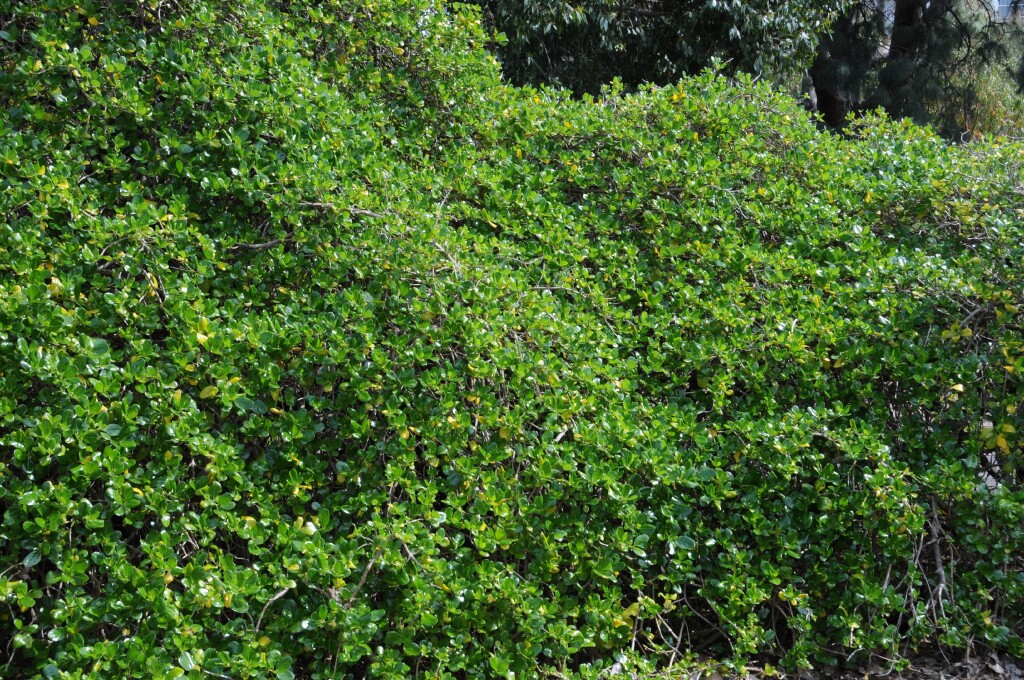Coprosma repens
A.Rich. Mirror BushLow shrub to small tree 0.5–8 m high; branches stout, glabrous or finely pubescent. Leaves ovate-oblong to suborbicular, mostly 50–80 mm long and 10–50 mm wide, c. fleshy, discolorous, obtuse, truncate or emarginate, glabrous, upper surface lustrous, domatia prominent on lower surface, margins somewhat recurved; petiole 5–15 mm long; stipules triangular, toothed. Flowers subsessile, unisexual, in axillary clusters. Male flowers in dense, compound clusters; calyx minute, 4-lobed; corolla funnel-shaped, c. 5 mm long, lobes c. equal to tube. Female flowers usually in 3-flowered clusters; calyx with 4 short rounded teeth; corolla tubular, c. 3 mm long, lobes shorter than tube; style usually 2-branched. Drupe subglobose, 6–8 mm diam., apex depressed, orange-red. Flowers Sep.–Dec.
MuM, Wim, GleP, Brid, VVP, GipP, OtP, WaP, Gold, CVU, GGr, DunT, NIS, EGL, EGU, WPro, HSF, HNF, OtR, Strz, VAlp. Also naturalised WA, SA, NSW (including Lord Howe Island), Tas. Native to New Zealand. Previously planted as a salt-tolerant hedge or windbreak in many coastal districts, but now widely naturalised in coastal scrubs, hinterland forests and shrublands.
Jeanes, J.A. (1999). Rubiaceae. In: Walsh, N.G.; Entwisle, T.J., Flora of Victoria Vol. 4, Cornaceae to Asteraceae, pp. 616–642. Inkata Press, Melbourne.
 Spinning
Spinning




